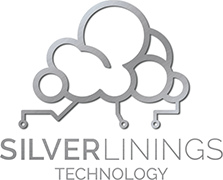 The senior living industry stands at a critical crossroads. With the U.S. population aged 65 and older projected to nearly double from 52 million in 2018 to 95 million by 2060, senior living providers face unprecedented demand coupled with evolving expectations. The next generation of seniors, primarily Baby Boomers and Gen X, are significantly more tech-savvy than their predecessors and expect living environments that integrate technology to enhance safety, independence, and overall quality of life.
The senior living industry stands at a critical crossroads. With the U.S. population aged 65 and older projected to nearly double from 52 million in 2018 to 95 million by 2060, senior living providers face unprecedented demand coupled with evolving expectations. The next generation of seniors, primarily Baby Boomers and Gen X, are significantly more tech-savvy than their predecessors and expect living environments that integrate technology to enhance safety, independence, and overall quality of life.
Technology investments in senior living are not just about keeping pace with trends; they are strategic decisions that can revolutionize operations and improve care quality. Smart technology integration can:
- Enhance resident health outcomes and satisfaction
- Increase operational efficiency and reduce costs
- Address staffing challenges through automation
- Create competitive advantages in an expanding market
- Build resilience against future public health emergencies
By proactively investing in the right technology, senior living facilities can better meet the needs of residents and staff, ensuring sustainable operations and long-term success. This comprehensive guide explores essential technology investments that will future-proof your senior living facilities for the next decade and beyond.
Key Technology Investment Areas
1. Health Monitoring & Safety Systems
Remote Patient Monitoring
Advanced wearable devices now offer continuous monitoring of vital signs, sleep patterns, and activity levels without being intrusive. These technologies can detect subtle changes in health metrics before they become serious problems, allowing for timely interventions that prevent hospitalizations and enhance quality of care.
Sophisticated Fall Prevention and Detection
Falls remain one of the greatest health risks for seniors. AI-powered camera systems, pressure-sensitive flooring, and advanced wearables can detect falls in real time while preserving privacy. These tools enable caregivers to respond quickly, reducing the severity of injuries and improving resident safety.
Medication Management Technologies
Automated medication dispensing systems with biometric authentication help ensure adherence while minimizing medication errors. From electronic pill dispensers to fully integrated platforms that alert staff and family members when medications are missed, these solutions support better health management.
Ambient Monitoring Systems
Non-wearable sensors embedded in living spaces can monitor movement patterns, detect behavioral anomalies, and even track vital signs using radar-based technology. These innovations provide a discreet way to monitor residents' well-being without compromising their dignity.
2. Connectivity & Social Engagement Platforms
Intuitive Communication Tools
Senior-friendly tablets and voice-controlled interfaces help residents stay connected with family, friends, and caregivers. Features such as one-touch video calling, large-text navigation, and accessible social media integration can significantly reduce feelings of isolation.
Immersive Experience Technologies
Virtual and augmented reality (VR/AR) platforms offer powerful cognitive stimulation, entertainment, and therapeutic applications. VR can transport residents to familiar places from their past, provide virtual travel experiences, and even assist with pain management and memory care.
Community Engagement Platforms
Customized facility mobile apps can streamline services such as meal ordering, activity registration, and appointment scheduling. Digital bulletin boards and personalized activity recommendations encourage participation and foster a stronger sense of community among residents.
Cognitive Fitness Technology
Brain training applications tailored for older adults can help maintain cognitive function while offering an enjoyable way to stay mentally active. These applications can be adapted to individual ability levels and provide tracking tools to monitor progress.
3. Smart Building Infrastructure
Integrated Building Management Systems
Automating lighting, HVAC, security, and other facility systems improves efficiency, reduces costs, and enhances resident comfort. Smart systems that adapt to real-time usage patterns can lead to significant energy savings while optimizing living conditions.
Voice-Activated Environment Controls
Smart speakers and voice assistants designed for senior use allow residents to control lighting, temperature, entertainment, and communication tools with simple voice commands. This feature is particularly valuable for individuals with mobility limitations.
Advanced Security Solutions
AI-powered surveillance systems can differentiate between normal and concerning behaviors, enhancing security without unnecessary staff intervention. Facial recognition for touchless entry and smart visitor management systems further improve safety.
Energy Efficiency Technologies
Smart windows, occupancy-sensitive LED lighting, and renewable energy solutions can reduce long-term operational costs while supporting sustainability initiatives. Investing in these technologies not only benefits the environment but also enhances cost-effectiveness.
4. Staff Efficiency and Care Coordination Tools
AI-Enhanced Electronic Health Records (EHRs)
Advanced EHR systems designed for long-term care settings can predict health trends, streamline documentation, and ensure regulatory compliance, reducing administrative burdens for staff while improving resident outcomes.
Workflow Optimization Platforms
Task management software can prioritize care activities, optimize staff scheduling, and ensure seamless shift handoffs, leading to more efficient care delivery.
Staff Communication and Collaboration Tools
Secure messaging platforms, mobile documentation tools, and digital handoff solutions enable seamless communication between caregivers, improving teamwork and reducing errors in resident care.
Automated Reporting and Compliance Systems
AI-driven reporting tools can generate regulatory reports, identify potential compliance risks, and adapt to evolving legal requirements, helping facilities maintain compliance with minimal effort.
5. Telehealth and Care Coordination Infrastructure
Dedicated Telehealth Spaces
Creating designated telehealth rooms equipped with proper lighting, sound insulation, and medical peripherals ensures high-quality virtual healthcare experiences for residents.
Provider Network Integration
Secure digital platforms that facilitate seamless communication between senior living facilities and local healthcare providers improve care coordination and reduce unnecessary hospital visits.
Remote Specialist Access
Virtual consultations with specialists in fields such as dermatology, psychiatry, and neurology eliminate transportation barriers and increase access to expert care for residents.
Family Portal Systems
Secure online portals allow authorized family members to access care notes, communicate with staff, and participate in virtual healthcare appointments, fostering transparency and involvement in their loved one’s care.
Implementation Strategies
To successfully implement these technologies, senior living providers should follow a phased approach:
- Assessment Phase: Evaluate current infrastructure, identify gaps, and determine technological readiness.
- Foundation Building: Upgrade essential systems such as WiFi, security, and staff communication tools.
- Resident-Facing Additions: Introduce technologies that directly enhance resident experience, such as health monitoring and social engagement tools.
- Advanced Integration: Connect systems to enable predictive analytics and workflow optimization.
Staff engagement is also critical. Involving employees in technology selection, providing hands-on training, and recognizing early adopters can help ensure successful adoption.
Financial Planning and ROI Considerations
Investing in technology requires careful financial planning. Facilities should separate capital expenditures from operational costs, explore technology grants, and adopt subscription-based models to reduce upfront expenses. Beyond direct revenue benefits, facilities should measure ROI in terms of staff retention, resident satisfaction, and avoided costs such as hospitalizations.
Conclusion: How Silver Linings Technology Can Help
Technology investment in senior living is no longer optional—it is essential for success in an evolving marketplace. Facilities that embrace technology will attract more residents, retain skilled staff, and ensure long-term sustainability. However, implementing these solutions effectively requires expert guidance.
Silver Linings Technology specializes in IT strategy, cloud conversion, and help desk services, offering tailored solutions to help your organization stay secure and resilient. If you have questions about securing your IT infrastructure, optimizing operations, or implementing new technologies, our team is here to help.
📞 Reach out to Silver Linings Technology at 360-450-4759 to discuss how we can strengthen your IT security and support your business operations.


